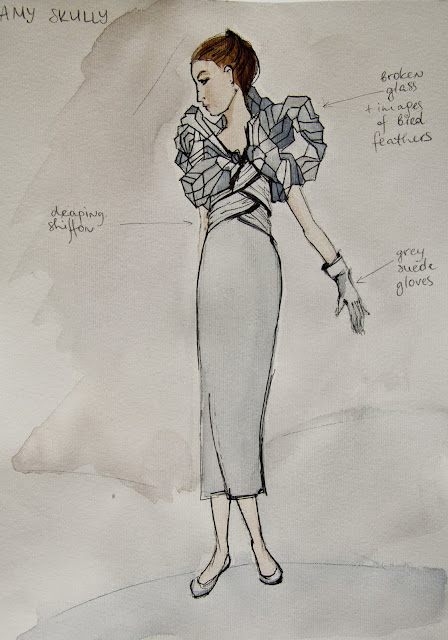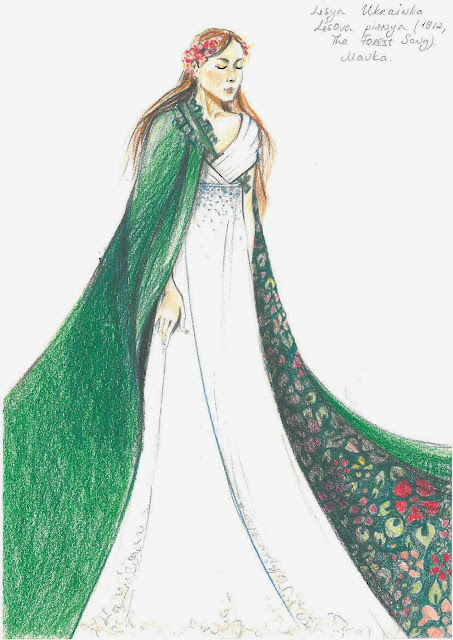Tuesday, 1 November 2011
Wednesday, 3 August 2011
Monday, 20 June 2011
Other Voices, Other Rooms
A novel Other Voices, Other Rooms is written by Truman Capote in 1948. It is a story of loneliness and disappointments. As Capote wrote, "the central theme of Other Voices, Other Rooms was my search for the existence of this essentially imaginary person".
Birds are seen as an embodiment of freedom and feathers as its illusion or dead freedom.
Joel Harrison Knox, a 13-year old pretty, delicate boy comes to live with his father to the Skully's Landing. He is very imaginative and often tells incredible stories and tales without hesitation. The first time he appears in a blue shirt and white linen trousers, but with time he covers himself with bigger forms as though hiding and escaping from the real world, with different stuff, like souvenirs, sables, feathers, books, photographs from magazines and stones he used to keep in his box (at the back inside layers).
Florabela Thompkins, a 12-year old feminine, refined and prissy girl has a twin sister, Idabela, her opposite. She has long hair and beautiful face and wants to be an actress or a teacher. So she wears a pink feminine dress, the one that good girls would wear at her age. There are big pockets at sides of the dress filled with flowers and mirrors and a doll as a perfect image of a beautiful woman.
Amy Skull is Joel's aristocratic stepmother in her late 40s. She has resigned to take care of her paralyzed husband (Joel's father). She wears a grey dress with an upper part made of broken glass and mirrors with images of dead birds and feather on some pieces. This is the embodiment of broken lives and dreams.
Randolph is in his mid 30s and is Amy's first cousin, "effeminate, narcissistic and openly homosexual". As Amy said, "Mr. Randolph likes dead birds, especially with beautiful feathers". He wears a light white dress with trousers in feather print and loose kimono. There are beautiful real feathers that emerge from behind the wide red belt.
The Forest Song
Lesia Ukrainka, Lisova Pisnya (1911, The Forest Song). Mavka.
Mavka is a forest empress and a personification of beauty and defencelessness of nature and the beauty of the inner world of a human. She decides to become a human and marry a boy she loves but she realizes that she is not created for an ordinary life with everyday hard work and she feels disappointed because that boy chooses to marry another girl. So she turns into a tree and believes that her love is eternal now.
Sunday, 19 June 2011
Performances
Monologue "On your own way" written by Oleksandr Oles'.
It is a story read by a woman who leaves her husband to find herself. She realizes that she thinks, feels, loves, hates, rejoices and mourns as he does, and is filled with his wishes, desires and dreams. She wears and collects her dark clothes, but in the end she take off her black dress with understanding that she doesn't wants to carry his thoughts any more and reveals a light flowered dress.
1. Sassy teenage girl from children's home. She tries to look like a mature woman but looks sometimes ridiculous and awkward.
2. Romantic girls who comes to a library to read a novel about love.
3. Angel.
Old lady who sell dairy products on a village market and doesn't care how she looks.
Cultured and intellectual old lady as imagined by ukrainians.
Caring old lady who has dedicated her life to her family.
Friday, 27 May 2011
Do you still remember me, Florence?..
2011. Inspiration board and collection.
Florence. Sandro Botticelli. Early Renaissance.
"Primavera" painted by Sandro Botticelli in 1482 is the central piece of the whole idea. She is Spring - graceful, light and tender. She is searching for Winter to make Summer come. There was no time for her to blossom this year, so she stays on a road where she is supposed to be between Winter and Summer. But she realizes that there is no place for her there. And she has to go... to come back again after next Winter.
I made emphasis on reproducing soft and smooth lines that were adored by many Renaissance artists, using jersey material and the technique of draping to imitate the plasticity of form.
Thursday, 26 May 2011
Mayan Treasures
2009. Details of the collection.
I presented a collection which was inspired by the civilizations of Maya in nomination «Folk» at the IX International Young Fashion Designers Competition «Petcherski Kashtany» held in 2009. Instead of «literal quotation» of mayan costumes, I wanted to focus on adding some characteristic features to modern clothes.
Polka
2010. Dancing costume for polka.
The task for the second production practice at the end of the fourth year was to design a dancing costume for polka for a child's dancing group. Bearing in mind the importance of it being comfortable at dancing, on the base of my research I designed a costume consisting of a shirt, a vest, petticoat and pants, a skirt and a belt, choosing cotton and jersey fabrics in white, red and blue with polka dots.
Someone somewhere wants a letter from you
2010. Design for catalogue and sketches.
While writing a text for my fourth year project on the 1960s, I was gripped by a phrase used in an advertisement of the American Post Agency. It said: «Someone somewhere wants a letter from you». An interesting phrase, I thought and developed it into a story about a girl who has just graduated from the University and wanted to dedicate some time to travelling and finding what she really wants, so she hits the road. But there is home, a place where she can always come back and where someone waits for her, or just for a letter saying that she is doing fine. I had a hook and I had a theme which was actually connected to the 60s hippie movement.
Charles Rennie Mackintosh
2009. Inspiration board and sketches.
Mackintosh's watercolours and especially bookcase (for the drawing room, 1900) where used as an inspiration to design clothes for teenage boys. Forms, lines and colour were taken from the image of a bookcase, and internal content - from watercolours.
Scotland Street School was used as a background to stress the purpose of clothes.
Beatrix Potter
2008. Sleep and lounge wear.
This was a very sudden discovery, to use a child's story to design sleep and lounge wear. I was watching a film Miss Potter (Chris Noonan, 2006) when I had a flash of inspiration. So, right after the film had ended, I started to search for Beatrix Potter's biography and works. This was such an amazing quest especially because I had some stuff with her illustrations when I was a little girl.
So, The Tale of Peter Rabbit was chosen and I dived into work. Cloaks, shawls and jackets were taken from the characters and patterns were made from Potters' original illustrations.
Japanese Gardens
Fall 2007. Inspiration board. Sketches in two variations.
One of the tasks at the end of the second year of study was to draw sketches basing on a landscape architecture. Japanese gardens were my source for creation. I distinguished low hight, round forms, curve lines and jagged edges which were used then in clothes.
Subscribe to:
Comments (Atom)



















































